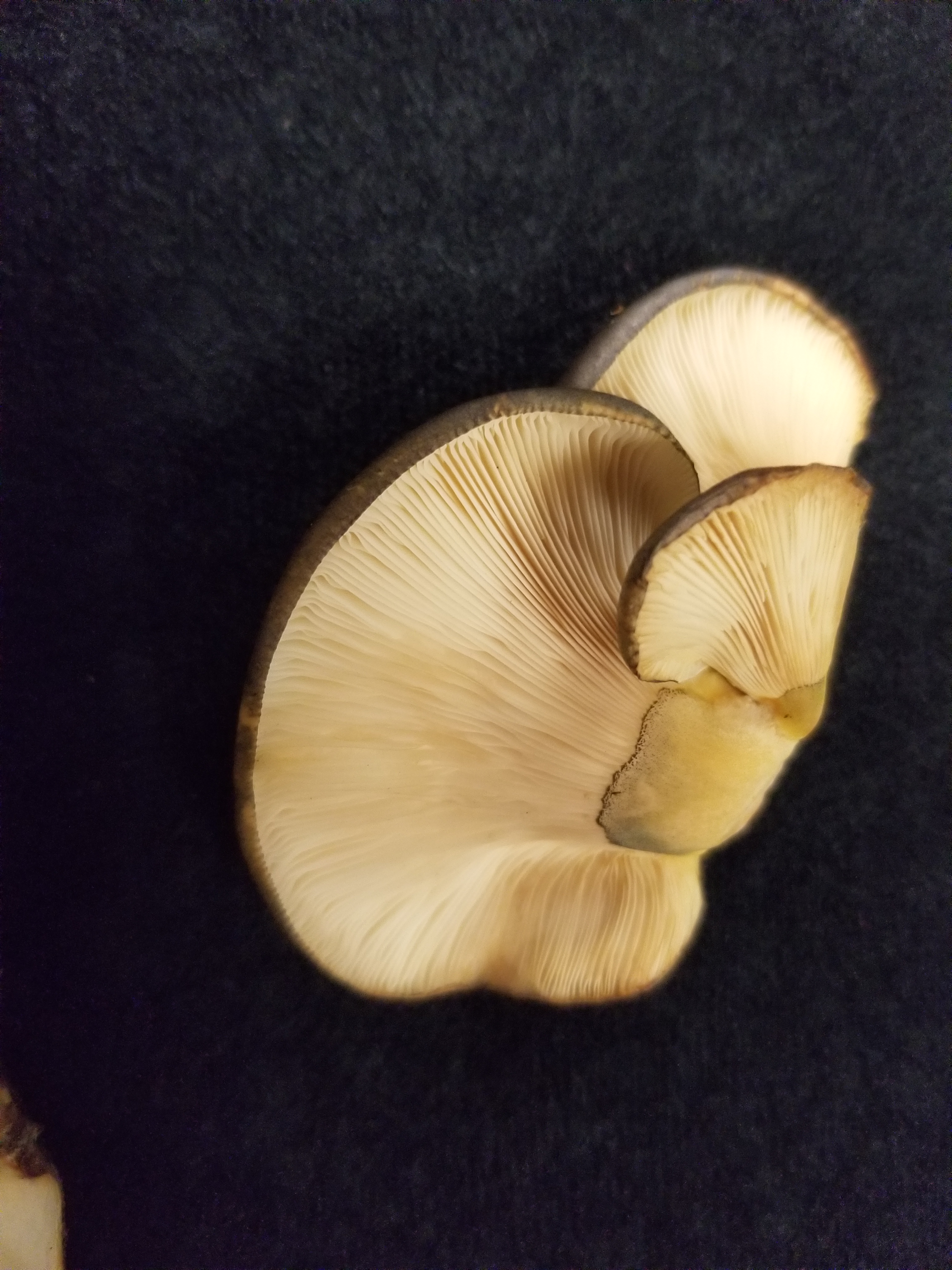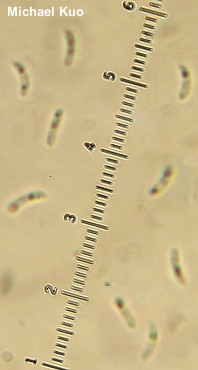Panellus serotinus
Panellus serotinus is considered a late fall oyster, growing October through December.

Panellus serotinus (Persoon)
- Phylum – Basidiomycota
- Class: Agaricomycetes
- Order: Agaricales
- Family: Mycenaceae
- Genus: Panellus
- Species: serotinus
Panellus serotinus is considered a late fall oyster, growing October through December. In Japan it is a highly valuable mushroom called mukitake. It grows throughout the United States usually found growing on downed hardwood or conifer logs and overlapping. The cap is 3-10 cm wide and attached laterally and the margin is rolled inward. The cap was sticky when first picked, but dissipated later and looks like an oyster, hence the name. The coloring is dark brown, olive and green mixed with yellow and violet (Figure 1).
The gills are close and short. They are pale brownish color or yellowish and the stem is absent or short, lateral, thick that is joined by having grown together with velvety covering (Figure 2).

There have been studies on Panellus serotinus in improving the liver in nonalcoholic fatty liver disease through the suppression of a protein in mice and other ongoing medicinal studies of this mushroom. It can be eaten but the mushroom must be cooked for a long time for it to be edible.


Spores are 3.5–5.5 x 0.75–1 µm and smooth. A couple drops of KOH and they are hyaline; with amyloid walls when immediately released or attached to basidia.
References:
Baroni, Timothy J. (2017) Mushrooms of the Northeastern United States and Eastern Canada. Portland, Oregon. Timber Press. p.41.
Koji Nagao, Nao Inoue, Masashi Inafuku, Bungo Shirouchi, Takanori Morooka, Saori Nomura, Naoki Nagamori, Teruyoshi Yanagita. Mukitake mushroom (Panellus serotinus) alleviates nonalcoholic fatty liver disease through the suppression of monocyte chemoattractant protein 1 production in db/db mice. The Journal of Nutritional Biochemistry. Volume 21, Issue 5, May 2010, Pages 418-423.
Kuo, M. (2017, January). Panellus serotinus. Retrieved from the MushroomExpert.Com.



 Print
Print Email
Email



